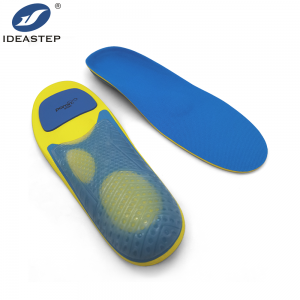
Insoles alone are unlikely to directly increase jump height. Jump height is primarily determined by factors such as muscle strength, power, technique, and overall fitness level. However, insoles can indirectly contribute to improving performance during jumping activities by providing support, cushioning, and alignment benefits. Here are a few ways insoles may potentially impact jump performance:
- Shock Absorption: Insoles with cushioning materials like EVA or gel can help absorb the impact forces generated during jumping, reducing the stress on the joints and muscles. This can contribute to improved comfort and potentially reduce the risk of injury, allowing athletes to train and perform at their best.
- Stability and Alignment: Insoles with thermoplastic PP shells or other supportive structures can help improve foot alignment and stability. Proper alignment and stability can optimize the transfer of force from the lower body to the ground during a jump, potentially enhancing jump efficiency and height.
- Arch Support: Insoles that provide adequate arch support can help maintain proper foot mechanics and prevent excessive pronation or supination. This can contribute to better weight distribution and alignment, potentially optimizing power transfer and jump performance.
While insoles can offer these benefits, it’s important to note that improving jump height requires a comprehensive approach that includes strength training, plyometrics, technique refinement, and overall conditioning. Insoles can be a supportive tool within this broader training regimen, but they are not a standalone solution for increasing jump height. Consulting with a sports professional or coach can provide personalized guidance on optimizing jump performance.
Expand more related content: https://www.aideastep.com/sports-insoles/.
